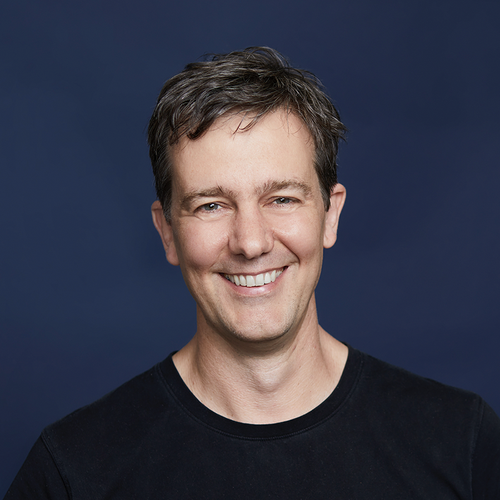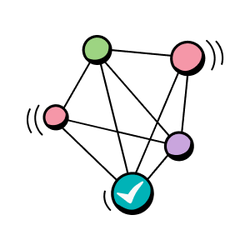
Our unique approach to diversity and inclusion

Written by

Founder & CEO, Culture Amp
Diversity, equity, and Inclusion (DEI) is so important to Culture Amp that it’s part of everything we do. We spent a great deal of time evaluating how to build out this function within Culture Amp. During our research, we spoke with people across the globe and learned two important things.
First, there is no universally proven strategy for success. We know that culture cannot simply be copied and pasted. The DEI function at Culture Amp would be unique in that it would be the face of D&I internally, but also externally to our 6,000 customers. The role must be customized to fit our unique culture, business objectives, and global footprint.
Second, speaking to different people gave us diverse and valuable perspectives. A light bulb went off - the role should be filled with various voices. That’s how we decided to make the Head of DEI role a rotation for potential leaders. Anyone interested can apply for the opportunity to build their strategic muscle and learn new things in this role for 12 months. We’re now approaching the first year's end, and I believe this approach has worked well for us.
Our first Head of DEI is Steven Huang. In his final interview for the role, he said something that I really loved. His objective for the year was for everybody at Culture Amp to articulate why DEI was valuable to them. Rather than only reporting on diversity metrics, he felt that we should focus on taking our people on a journey, helping them understand what inclusion really means, and creating a space where they can speak up if they don't feel included. The thread that runs through all of the work that he’s done this year aligns with our first value of having the courage to be vulnerable.
As Steven says, “It’s okay to say the wrong thing as long as you’re willing to listen to feedback. When people say they’re offended, feel ostracized, or don’t feel included, we need to take that perspective on board.”
Over the past nine months, Steven has focused on three things in particular:
1. Creating a pathway to inclusion
Steven has first focused on creating a pathway to inclusion and giving people the space to have uncomfortable conversations. He has achieved this by building programs incorporating ideas about DEI into our work at both a strategic and tactical level. His work has helped us all see issues that we weren’t aware of.
Take recruitment as an example. Many people believe that unconscious bias training is the best practice for hiring managers, but without context, this type of training can actually make differences more noticeable. Steven believes unconscious bias belongs in a portfolio of diversity management strategies that acknowledge that bias comes from somewhere - racism, sexism, homophobia, transphobia, and ableism.
While unconscious bias training is valuable, it assumes that we’re getting diverse candidates, but our managers aren’t hiring them. But the truth of the matter is that we’re not seeing a truly diverse group of candidates because our company has not been attractive to those people. So, a lot of Steven’s work in the DEI space is not just about helping employees and managers to confront and look past their unconscious biases. It’s also about engaging the whole company to work out how to open up our arms and become a place where diverse people want to come and work.
Steven has also created Diversity and Inclusion Simulations. This open-source program creates simulations to engage people in discussions around DEI. These are run at our internal workshops and public People Geek events. Company leaders get involved so that the audience can watch them go through the process and create an environment where all employees can voice their perspectives. I’ll be involved in a simulation in Melbourne soon.
2. Hold ourselves to account with data
Through our DEI initiatives, we're now bringing data to bear and holding ourselves to account. A tactical way we’ve done this is in our calibration sessions, where we help managers decide how much people are paid. We do these sessions every 90 days to adjust levels and roles quickly.
After we’ve done the calibration, Steven and our Head of People run a series of analyses on our data and diversity splits across gender, job level, function, and location. For example, they examine whether we pay men more or less than women or if women are promoted faster than men. This highlights if we have a systemic issue to fix or if any statistically meaningful differences need to be explained, adjusted, and communicated. We can then put our hands on our hearts and say that we’re not under or overpaying any group of people.
In our most recent calibration, we found that women at Culture Amp are promoted on average every 14 months and men every 16 months. Statistically, that's not a big difference, but it's important to monitor.
Rather than just focusing on diversity metrics, Steven has also used our own Diversity & Inclusion Survey. Initially, he focused on whether we have an inclusive environment or not. We want to understand where exclusion might happen and, collectively, design strategies to remove disparate employee experiences.
3. Connecting Culture Amp to the broader DEI community
The essential thing Steven has done this year is connecting Culture Amp to the external DEI community. We’re still early on in our DEI journey, but we’re going on that journey with our eyes wide open. We’re not perfect, and there are so many other people to learn from, so it’s been great that Steven has spent a lot of his time talking to other companies (check out 21 diversity and inclusion influencers to meet some of them). He’s shared notes and stories about what they’re doing and reflected on how we can use those ideas at Culture Amp.
He’s also shared what we’re learning and doing around DEI with others. While many support our innovations, we also receive a healthy dose of criticism. Listening to and understanding the critics is a muscle every DEI function needs to develop.
I'm thrilled with the approach that Steven has taken. The concept of this role is to train our attention, and he’s certainly shone a light on important DEI areas. Since we started Culture Amp as four white, 30-something IT males, paying down our diversity debt has been important to us. It’s great to see that journey has gone beyond the need to hire more women and is now a much more holistic, deeper, and challenging conversation around what DEI means for our organization.




